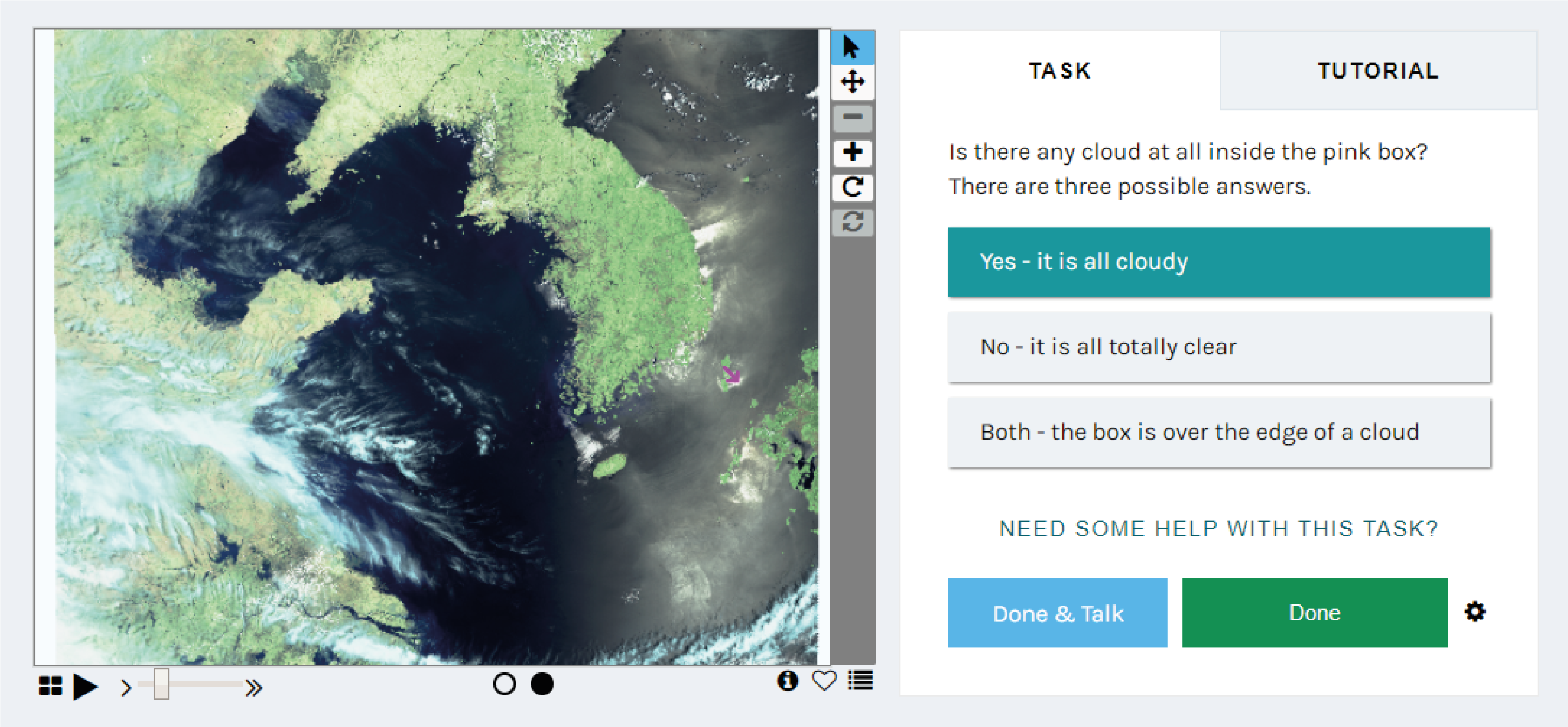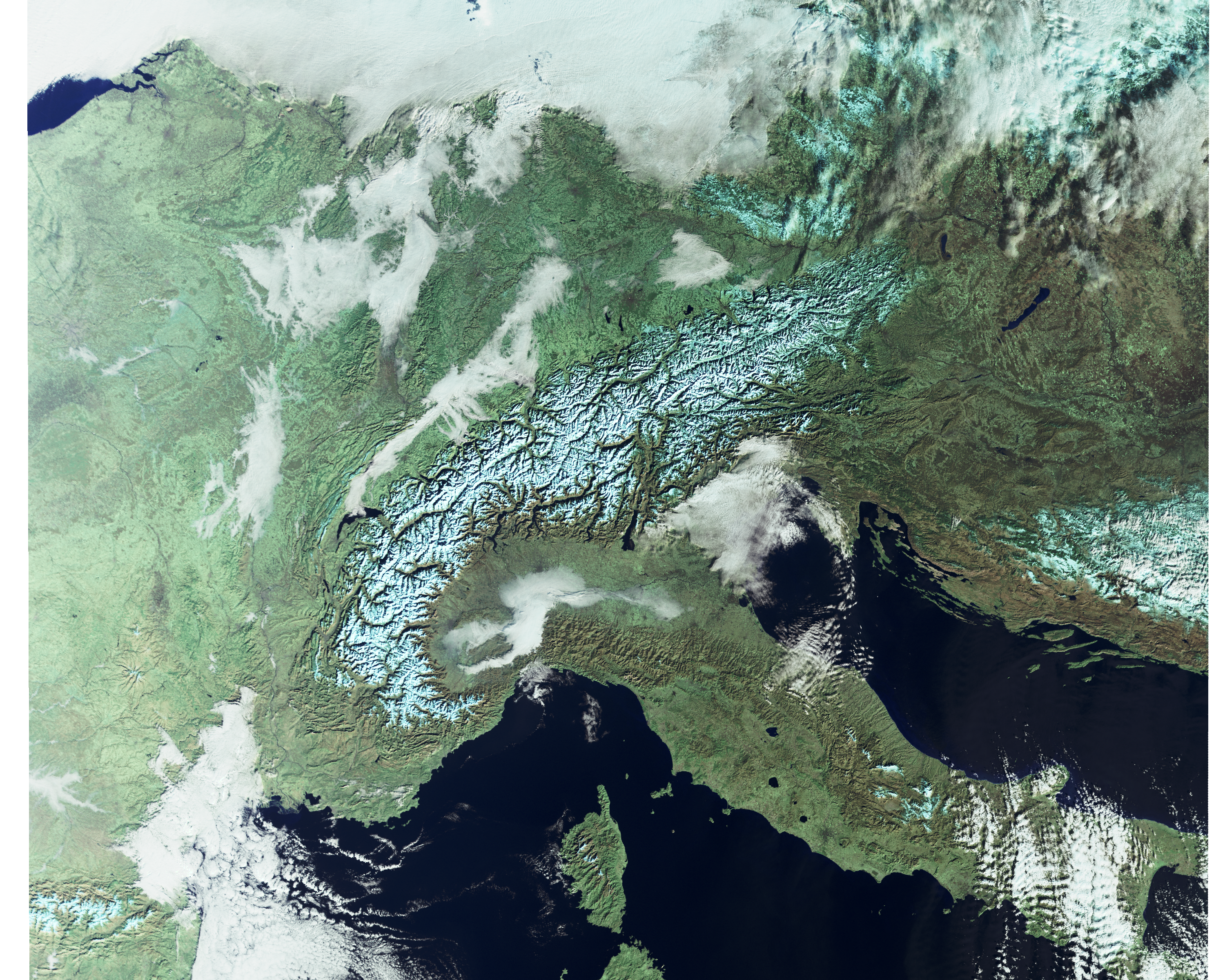 CloudCatcher is an online people-powered research project that is being developed on Zooniverse and asks volunteers to spot the clouds in real satellite images and give feedback on their experience, helping climate change research. Have you ever been cloud watching and seen a cloud shaped liked an animal? We think that everyone is a cloud expert so our project is open for people of all ages to take part, and you definitely don't need to be a scientist.
CloudCatcher is an online people-powered research project that is being developed on Zooniverse and asks volunteers to spot the clouds in real satellite images and give feedback on their experience, helping climate change research. Have you ever been cloud watching and seen a cloud shaped liked an animal? We think that everyone is a cloud expert so our project is open for people of all ages to take part, and you definitely don't need to be a scientist.
Explore the project and classify as many images as you like. To learn about clouds, the technology behind it all or find more information on the project, you can read the Tutorial, the Field Guide, and the FAQ/information pages on Zooniverse. You can also watch the online talk 'How you can catch clouds from space'.
How to take part
1. Have a go at CloudCatcher!
You can access the project on any web browser on a laptop or PC.
2. Send us your feedback! The project is still in development and we'd love your help to improve it and make sure it's a successful project that is enjoyable and engages a wide variety of people. Here's how you can help us:

Why do we want people to spot clouds?
Scientists at RAL Space observe the Earth using satellites. The Sentinel-3 satellite orbits the planet once every 100 minutes, taking images as it goes and measuring the temperature of the Earth's surface with the Sea and Land Surface Temperature Radiometer. We take the temperature of the ocean's surface to an accuracy of 0.3°C. Accurate measurements are important to help monitor climate change and they are useful in day-to-day weather forecasting models.
However, when it's cloudy we can't measure any surface temperatures.
At any one time two-thirds of the Earth is covered in clouds; they obscure our view and interfere with the measurements, giving us wrong temperatures. We therefore need to identify and remove any clouds in these satellite images, and we can teach our computers to do this for us automatically with 'cloud masking' (covering the clouds with a mask so they can't be seen). Even though our cloud mask is normally very accurate, unfortunately the computer doesn't always get it right e.g. it can miss thin, patchy clouds, or it can mistake pixels with snowy mountaintops for clouds. This causes a problem because a less accurate cloud mask will give us less accurate temperatures.
Our question is: how accurate is our existing cloud mask exactly?
To answer this tricky question, we need lots of people to look through a large set of images and spot the clouds - the human eye is often better at this than the computer! That is why we have developed CloudCatcher: a project for people to view some beautiful scenes of the Earth while taking part in real scientific research. Comparing the cloud masks made by humans and by the computer will help us to calculate their accuracy. In future, we could even use your results to help train new algorithms, so the computer could learn what a cloud really looks like.
CloudCatcher is still being developed and it is currently a 'beta' project on the Zooniverse platform, meaning it is ready for volunteers to test it and give us feedback to improve the project and encourage more people to contribute.
Images:
Top: The CloudCatcher project on Zooniverse. Become a CloudCatcher and help us spot the clouds! Credit: Zooniverse / screenshot by STFC RAL Space.
Bottom: People can be better than computers at telling the difference between snow and clouds. Help us spot the difference in this image of the Alps taken by Sentinel-3. Credit: Copernicus data / processed by RAL Space.
For more information please email cloudcatcher@stfc.ac.uk.
